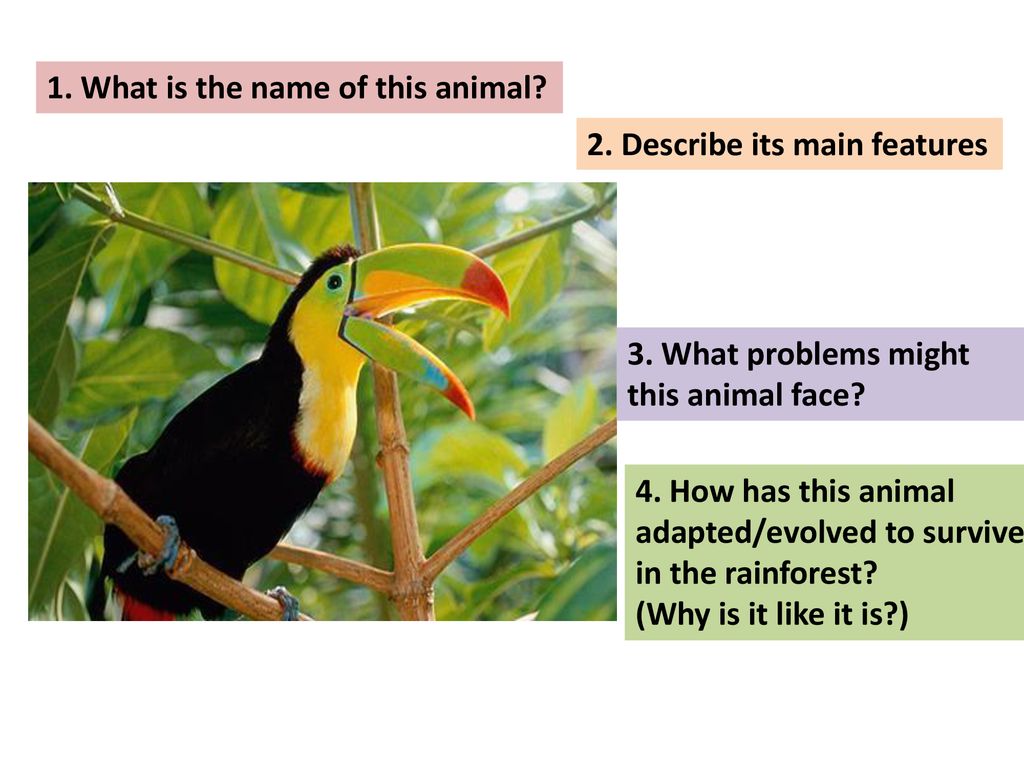Amazon Rainforest Animals Adaptations

Tropical Rainforest Overview From the Amazon rainforest in South America to the lush rainforests of Australia and southeast Asia to the.
Amazon rainforest animals adaptations. Amazing Adaptations focuses on how plants and animals have adapted to suit living in a rainforest environment. The tour discusses the different layers of the rainforest including microhabitats and how adaptation can lead to evolution over time. Including examples of eight animals that have adapted to life in rainforest conditionsWith this pack pupils are asked to gather information from the examples provided and use their knowledge to design their own animal perfectly suited to rainforest lifeHelp your children learn all about animals that live in the rainforest.
An introduction to animals that live in the Rainforest biome. Glass Frogs family Centrolenidae Unusual animals. Animals like the flying fox bat and Wallaces flying frog face less competition from animals such as birds and diurnal reptiles when they hunt at night.
In fact more than 20 of the worlds oxygen is produced in the Amazon Rainforest in South America due to the high number of plants living there. Creative Commons Sharealike Reviews. Some rainforest animals have adapted to hunt during the night instead of the day.
Leopard elephant snakes tigers monkey buffaloes frogs apes lizards many types of birds insects etc. The following adaptations allow plants to survive in the conditions of the rainforest. Black Caimans lay between 15 and 40 eggs but few will make it to adulthood due primarily to other animals stealing their eggs.
Check out my picks for the top 7 animals of Ecuadors Amazon rainforest. It is thought that in the Amazon rainforest there are. This lesson discovers how animals have adapted to the Amazon rainforest.
They have translucent skin which can be an effective camouflage against predators. Many species of insects are also nocturnal so this gives insectivorous predators an opportunity to hunt. Although three-toed sloths are both diurnal and nocturnal theyre largely inactive during the day.



















